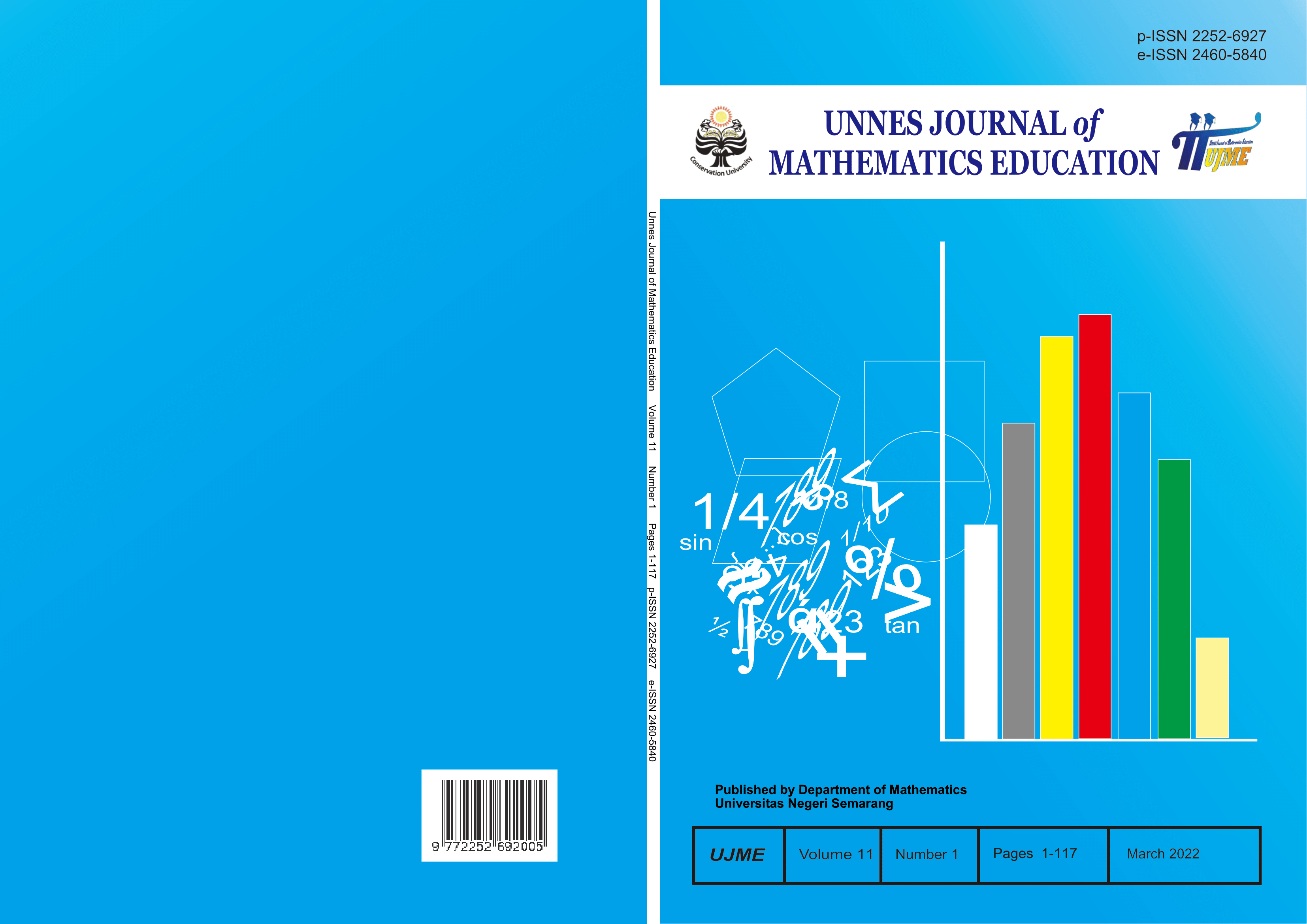The Development of Textbook Supplement on Cooperative Integrated Reading Composition Model to Improve Students’ Mathematical Communication Ability
##plugins.themes.academic_pro.article.main##
Abstract
The textbook supplement of Cooperative Integrated Reading Composition (CIRC) model is an innovative textbook for three variable linear equation systems and contains indicators of mathematical communication abilities as well as the steps of the CIRC learning model. The purpose of this research was to produce textbooks of the CIRC learning model on three-variable linear equation system in class X which has the potential to improve students' mathematical communication abilities. This research used Research and Development (R&D) with 4D Models which are adapted into 4P Models. However, this research had three steps, they were 1) Define; 2) Design; and 3) Develop. Based on the result of the study, it was found that the textbook supplement on CIRC learning models can be use in learning with an average percentage of 91.23%, it means that the textbook supplement was very feasible. In addition, the readability test of textbook supplement use Cochran Test and the result shows that the students had the same understanding of the textbook supplement. The textbook supplement getting e-copyright from Directorate General of the Intellectual Property and ISBN from National Library of the Republic of Indonesia was ready used for the next steps, that was testing in classroom learning.
##plugins.themes.academic_pro.article.details##
References
BSNP. (2015). Pedoman Penilaian Buku Teks Matematika. Jakarta: Ristekdikti.
Clark, K. K., Jacobs, J., Pittman, M. E., & Borko, H. (2005). Strategies for Building Mathematical Communication in the Middle School Classroom : Modeled in Professional Development, Implemented in the Classroom. Current Issues in Middle Education. http://www.kennesaw.edu/education/mge/napomle/cimle/fall 2005/clark_fa05.pdf
Djarwanto. (2003). Statistik Non Parametrik. Yogyakarta: BPFE.
Karimah. (2017). Pembelajaran Matematika Model Cooperative Integrated Reading Composition (CIRC) untuk meningkatkan Kemampuan komunikasi matematis materi segiempat kelas VII. Jurnal Ilmiah Pendidikan Matematika, 1(2): 136-143.
Lusiatri, E., & Dewi, N. R. (2021). Lembar Permasalahan Berbasis Pembelajaran Model Eliciting Activities (MEAs) dengan Pendekatan Scientific mampu Meningkatkan Kemampuan Komunikasi Matematis Siswa. Prosiding Seminar Nasional Matematika (Vol. 4:167-173).
Mardapi, D. (2008). Teknik Penyusunan Instrumen Tes dan Non Tes. Yogyakarta: Cendekia Press
OECD., K. (2018). OECD science, technology and innovation Outlook 2018. Paris: OECD Publishing.
Sudijono. (2014). Pengantar Statistik Pendidikan. Jakarta: Grafindo Persada.
The Law of the Republic of Indonesia number 20 of The Year 2003 concerning about National Education System
The Regulation of the Minister of Education and Culture Number 65 of The Year 2013
The Regulation of the National Minister of Education Number 59 of The Year 2014
